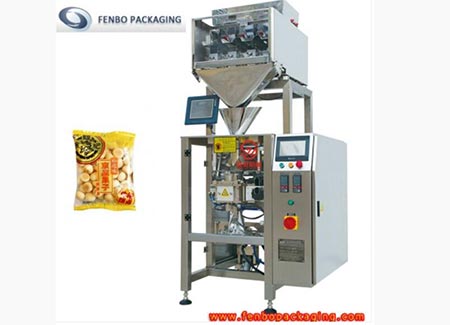What is the difference between vertical and horizontal sealing machines?
Aug 29,2024 | Views: 232
Vertical and horizontal sealing machines are used for packaging and sealing products, often in the food, pharmaceutical, and industrial sectors. The main differences between these two types of machines lie in their design, operation, and the types of products they handle. Here’s a breakdown of the differences:
These machines are designed to operate in a vertical orientation. They typically seal packages that are positioned upright.
Commonly used for products that are liquid or free-flowing, such as liquids in pouches or bags.
Horizontal Sealing Machines:
Operate in a horizontal orientation, sealing packages that lie flat.
Suitable for solid products, granular materials, or items that need to be packaged in a flat position.
Ideal for heavy or bulky items due to their ability to support the weight of the product while sealing.
Often used for packaging items like powders, granules, or liquids in stand-up pouches.
Horizontal Sealing Machines:
More versatile for a variety of shapes and sizes, commonly used for items like bars, trays, or other flat products.
Generally utilize heat sealing or impulse sealing methods to close the top and bottom of bags or pouches.
May include features like filling stations to dispense products before sealing.
Horizontal Sealing Machines:
Employ similar sealing techniques but often incorporate continuous motion to maximize efficiency.
Can also include various mechanisms such as lap seals, fin seals, or pillow seals depending on the packaging requirements.
Often slower compared to horizontal machines because they may require more manual handling, particularly if they involve bulkier items.
Horizontal Sealing Machines:
Typically faster and more efficient for high-volume production runs, as they can continuously feed and seal products without interruption.
Common in industries dealing with liquids, powders, or granules, such as food processing, pet food packaging, and agricultural products.
Horizontal Sealing Machines:
Widely used in industries for packaging snacks, frozen foods, pharmaceuticals, and consumer goods.
Conclusion
The choice between vertical and horizontal sealing machines depends on the specific packaging needs, product types, and production requirements of a business. Understanding these differences helps in selecting the appropriate sealing machine to enhance efficiency and meet product specifications.
Prev: How does a form fill seal machine work?
Next: What is FFS pouch packing machine?
1. Orientation
Vertical Sealing Machines:These machines are designed to operate in a vertical orientation. They typically seal packages that are positioned upright.
Commonly used for products that are liquid or free-flowing, such as liquids in pouches or bags.
Horizontal Sealing Machines:
Operate in a horizontal orientation, sealing packages that lie flat.
Suitable for solid products, granular materials, or items that need to be packaged in a flat position.
2. Product Handling
Vertical Sealing Machines:Ideal for heavy or bulky items due to their ability to support the weight of the product while sealing.
Often used for packaging items like powders, granules, or liquids in stand-up pouches.
Horizontal Sealing Machines:
More versatile for a variety of shapes and sizes, commonly used for items like bars, trays, or other flat products.
Typically accommodates product feeding that maintains the horizontal alignment through the sealing process.
3. Sealing Mechanism
Vertical Sealing Machines:Generally utilize heat sealing or impulse sealing methods to close the top and bottom of bags or pouches.
May include features like filling stations to dispense products before sealing.
Horizontal Sealing Machines:
Employ similar sealing techniques but often incorporate continuous motion to maximize efficiency.
Can also include various mechanisms such as lap seals, fin seals, or pillow seals depending on the packaging requirements.
4. Speed and Efficiency
Vertical Sealing Machines:Often slower compared to horizontal machines because they may require more manual handling, particularly if they involve bulkier items.
Horizontal Sealing Machines:
Typically faster and more efficient for high-volume production runs, as they can continuously feed and seal products without interruption.
5. Applications
Vertical Sealing Machines:Common in industries dealing with liquids, powders, or granules, such as food processing, pet food packaging, and agricultural products.
Horizontal Sealing Machines:
Widely used in industries for packaging snacks, frozen foods, pharmaceuticals, and consumer goods.
Conclusion
The choice between vertical and horizontal sealing machines depends on the specific packaging needs, product types, and production requirements of a business. Understanding these differences helps in selecting the appropriate sealing machine to enhance efficiency and meet product specifications.





